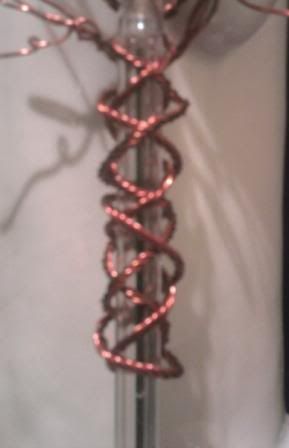Mr. "C" Reply to Chet
Chet,
Glad you saw ultrasonic heater on forum and asked about it. I have been in contact with Timothy Trampp a year ago and he was trying to make a sonic boiler but could not write to me. I'm very sorry about it. I asked him what frequency ultrasonic boiler for him and he told me to work on three frequencies resonating. I remember the 330 KHz and he told me that he had another hemisphere inside the ball. He lied to me. There is one. The ball resonates at 82.5 KHz to thick hemispherical electrode is zero. Inside the first hemisphere to resonate at 165KHz is the first harmonic. A third small to 330KHz, and it is the second harmonic phase. You saw the same principle in the original Sonic boiler but the AC current sine excitation current. In the ultrasonic 9 V battery and ultrasound vibrates the crystal lattice of metal to cause the collapse of the electron and the vacuum energy withdraw from the system of high frequency.
The ultrasonic boiler must not be used to water heated to 50 C, and put it on him.
If you put tap into it and changing the frequency does not work (not heated).
Answer your questions?
Chet,
Glad you saw ultrasonic heater on forum and asked about it. I have been in contact with Timothy Trampp a year ago and he was trying to make a sonic boiler but could not write to me. I'm very sorry about it. I asked him what frequency ultrasonic boiler for him and he told me to work on three frequencies resonating. I remember the 330 KHz and he told me that he had another hemisphere inside the ball. He lied to me. There is one. The ball resonates at 82.5 KHz to thick hemispherical electrode is zero. Inside the first hemisphere to resonate at 165KHz is the first harmonic. A third small to 330KHz, and it is the second harmonic phase. You saw the same principle in the original Sonic boiler but the AC current sine excitation current. In the ultrasonic 9 V battery and ultrasound vibrates the crystal lattice of metal to cause the collapse of the electron and the vacuum energy withdraw from the system of high frequency.
The ultrasonic boiler must not be used to water heated to 50 C, and put it on him.
If you put tap into it and changing the frequency does not work (not heated).
Answer your questions?
Originally posted by RAMSET
View Post

 I seem to have a peak always at 50Hz, I assume this is interference from my mains.
I seem to have a peak always at 50Hz, I assume this is interference from my mains. 



 )
)  )
)



Comment